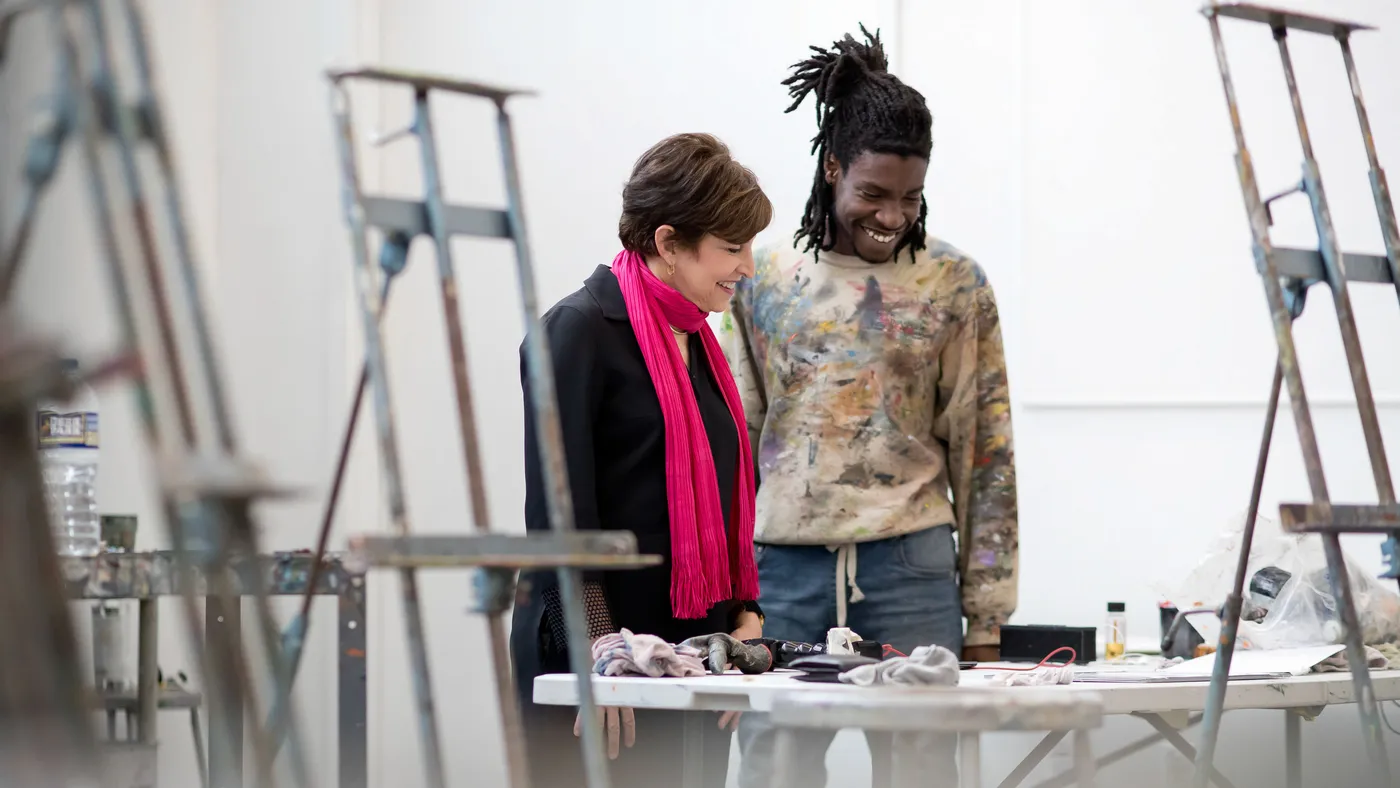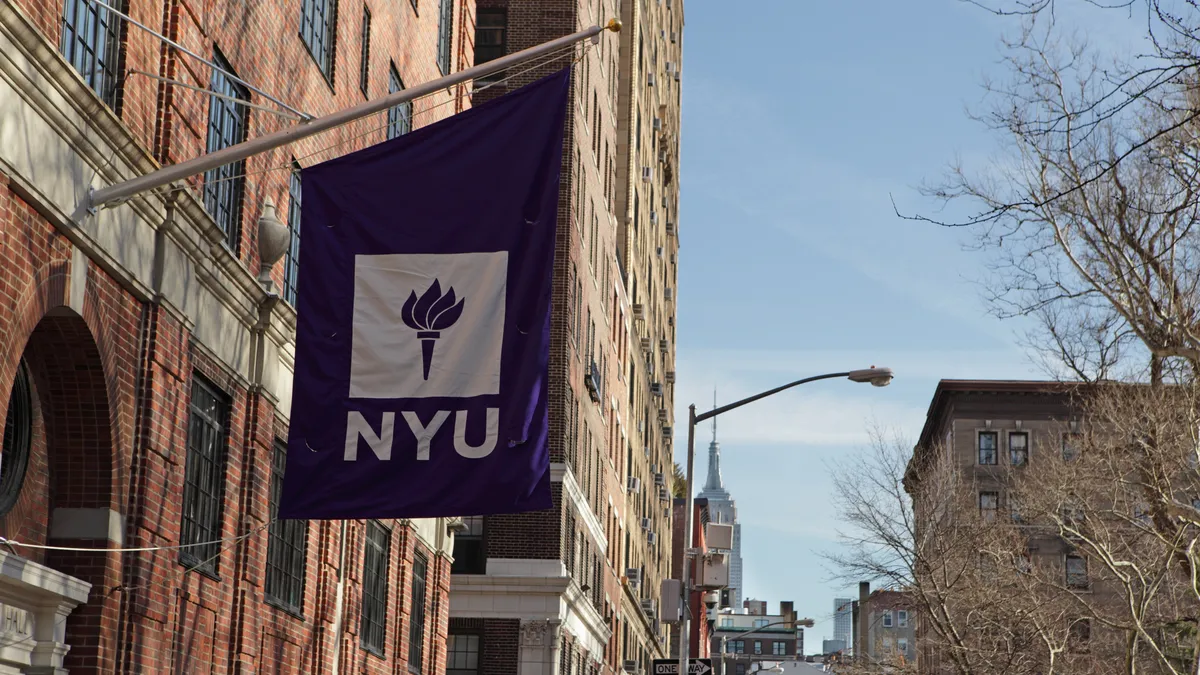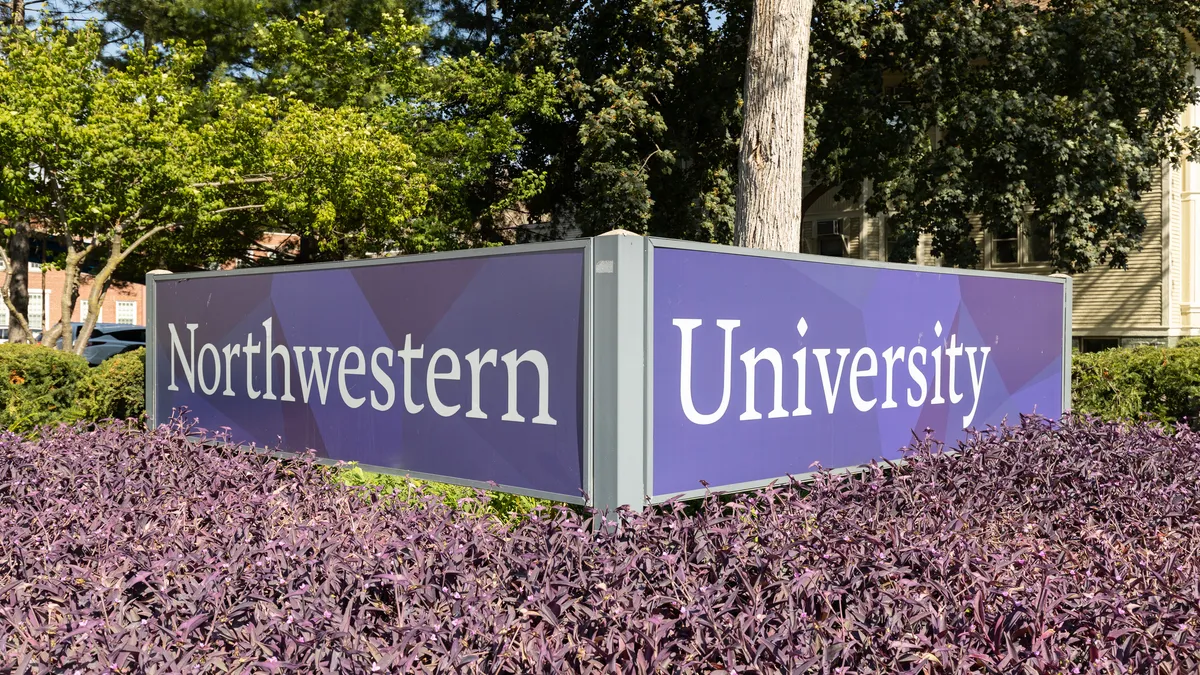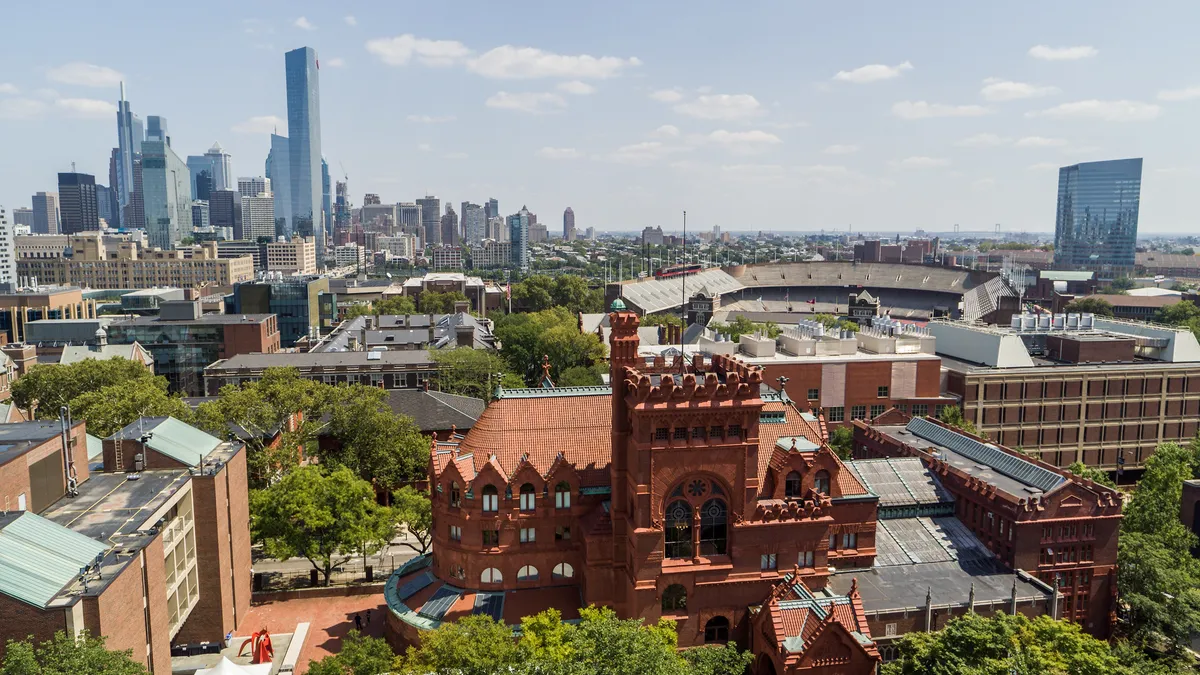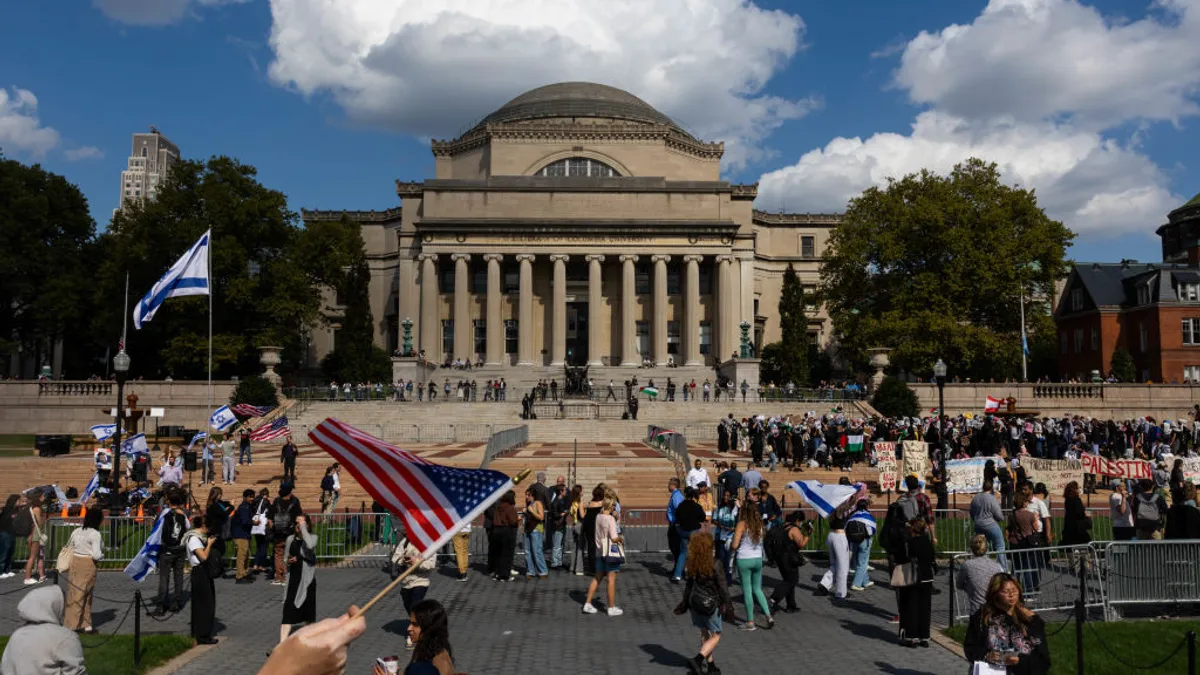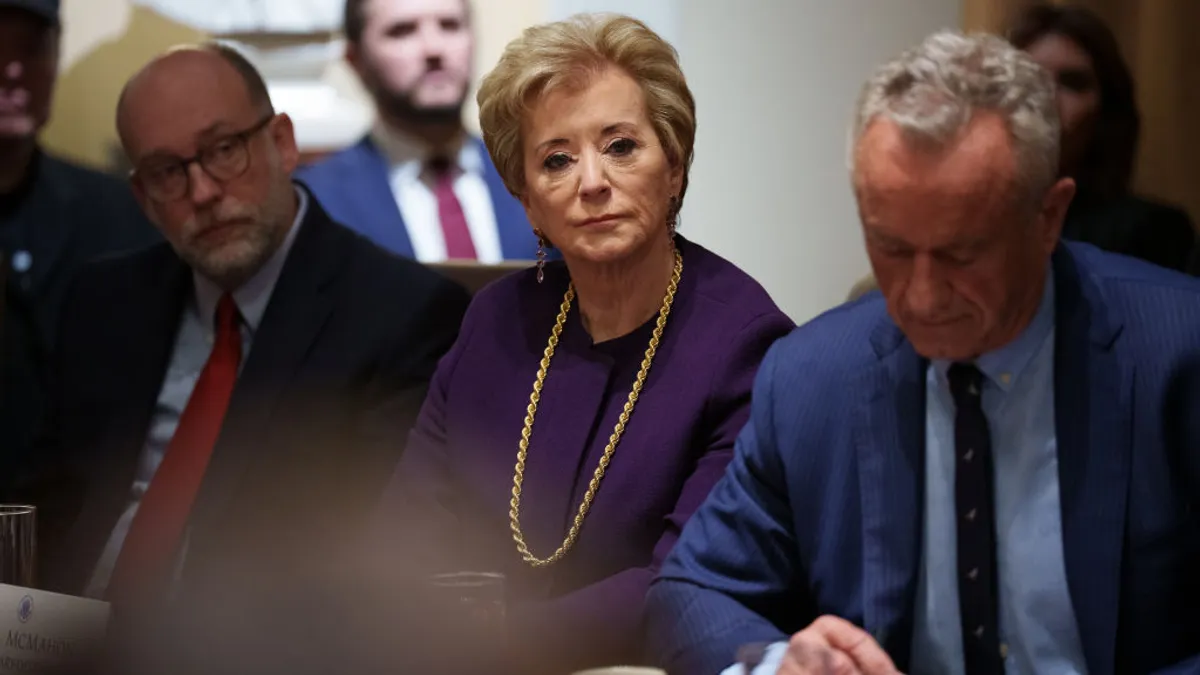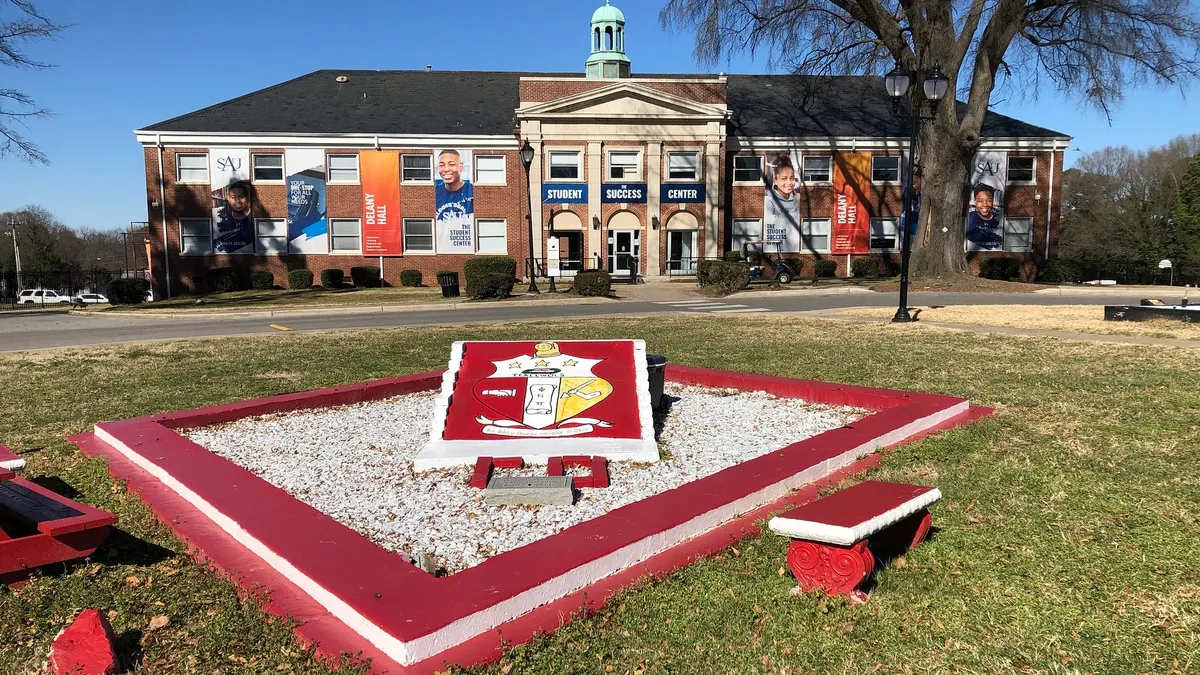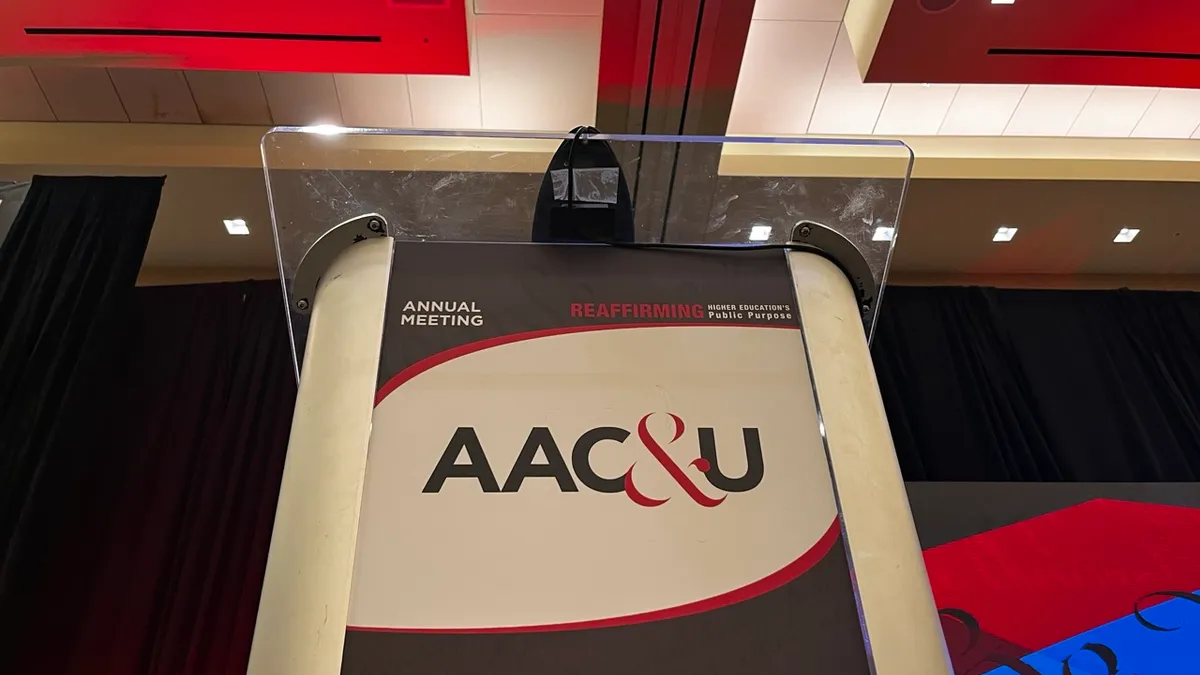This is part two of a two-part series on the sudden closure of University of the Arts. For part one, click here.
PHILADELPHIA — Standing in a voluminous, sunlit lobby in Temple University’s Tyler School of Art and Architecture, Dean Susan Cahan described a recent scene: Some 100 former University of the Arts students entering the hall for a special, half-day-long orientation specifically for them — students whose original chosen college had shuttered without warning roughly two months earlier.
“They were petrified,” Cahan said, standing in roughly the same place where she had greeted students that day.
One incoming first-year student told Cahan she learned of UArts’ collapse on the way to her high school senior prom.
The shell-shocked students had in common the experience of suddenly losing their moorings when UArts abruptly closed on June 7.
But as the eventing went on, in Cahan’s telling, they laughed and smiled more, and some of the students found their friends from UArts — seeing them for the first time since the institution closed.
Temple’s orientation provides one window into the question of what happens next in the UArts closure saga. While hundreds of UArts students have opted to attend Temple and other institutions that are trying to create a new home for them, larger questions hang over the city of Philadelphia: How will the hole left by the university’s collapse be filled — and can it be, completely?
Cahan’s pride in Temple’s art school is apparent as she walks through its spacious, well-equipped studios for metalworking, glassblowing, textile making, painting, sculpture and more. As she makes her way through the building on a slow afternoon inside the art school building during the university’s move-in day for fall semester, she recognizes nearly every face she sees.
This lends credence to her account of the art school being a tight-knit, intimate community. Still, the disorientation of former UArts students at Temple’s orientation is understandable. Although less than three miles from each other, Temple is a vastly different institution from what UArts was.
A consummate urban campus, UArts occupied several historic buildings in downtown Philadelphia, with a view up Broad Street of Philadelphia’s famed city hall building. Its main campus faced a busy boulevard and neighbored the Kimmel Center for the Performing Arts and other notable sites on the city’s Avenue of the Arts.
“It’s very literally at the very heart of the city,” said Daniel Pieczkolon, president of United Academics of Philadelphia — which represents UArts faculty and staff.
Temple, too, lies in an urban setting in north Philadelphia. But while it is more space-constrained than a typical college-town campus, its physical environment is many times larger and noticeably more insular than UArts'. Temple’s art school is tucked into the northeastern end of the university’s bustling campus.
Moreover, Temple's student body — 33,200-strong in fall 2022 – dwarfs the former UArts enrollment, which had a little over 1,300 students that fall.
But the institutional differences are perhaps the most significant: UArts — the product of multiple institutional pivots and mergers over nearly a century and half — was a private college and devoted exclusively to the arts.
“Part of the reason you're going to Temple is to go to Temple. It’s because it is not an art school,” said Bradley Philbert, a former UArts lecturer and a UAP official.
Temple, in other words, brings the full public university experience, where a student can sit in general education classes with others studying finance, mechanical engineering, chemistry and so on. “Being at an art school surrounded by other artists, being taught by other artists, is very different,” Philbert added.
Asked about those students who might appreciate Temple’s art school but not the large-university experience that accompanies it, Cahan had a simple answer: “Come here anyway.”
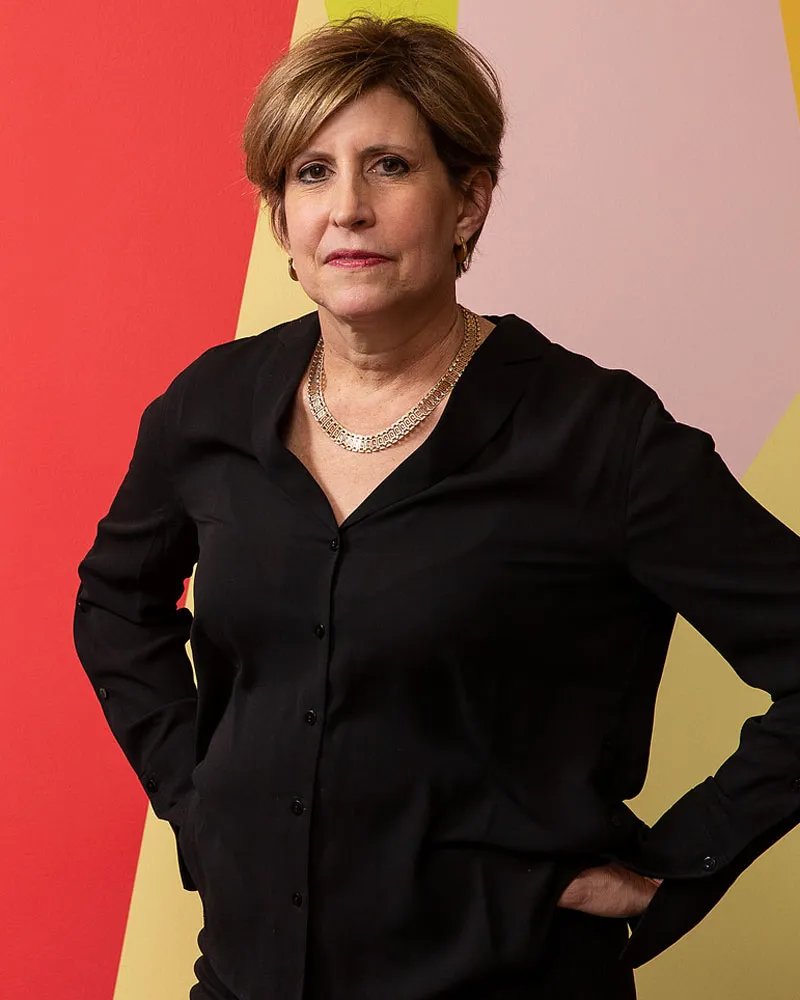
Elaborating later, she said, “Tyler has a distinct community within the Temple community, as do all of our schools and colleges.”
Conversations with the former UArts students has alerted Cahan to the need to build this message into Tyler's marketing efforts.
“We need to have a dual profile,” she said. “We need to have a distinct Tyler profile, and then we need to have a profile in which we are more clearly embedded at Temple University.”
‘I’ve never seen anything like this’
Many former and prospective UArts students have opted to attend Temple — over 330 had enrolled there by August, Temple said, by far the most among those institutions that absorbed the shuttered UArts’ students. Moore College of Art and Design, Drexel University and Arcadia University, all in the Philadelphia area, have taken on former UArts students, along with other teach-out partners including New York’s The New School and Bennington College, in Vermont.
Temple has been hustling to absorb and acclimate this group.
Arts deans, and not least of all their staff members, have ramped up advising and administrative operations to help.
Cahan described a “clockwork” kind of logistics needed to input transcripts and manage advising sessions — sometimes simultaneously for a given student. A hotline set up for advisers helped get transcripts moved to the top of the processing pile if the students were there and ready for their advising sessions but their transcripts weren’t.
Staff in the performing arts units gave up or postponed vacation time to help move UArts students through accelerated advising sessions, noted Robert Stroker, Temple’s vice provost for the arts and dean of Temple's performing and cinematic arts colleges.
“I’ve never seen anything like this,” Stroker said, speaking of the suddenness of UArts’s closure and the response within Temple to take on its students. “It's usually a 10-month period from a student's first contact, recruiting, then we get them in and advise them,” he said. “We had to bring this down to two months, for a lot of students.”
Stroker, like Cahan, also spoke of the visible pain witnessed among the former UArts students. “You could see the look in their eyes — that they’ve just been through something really traumatizing,” he said.
Within performing arts, over half of the 275 students that came over were first- and second-year students, Stroker said. “And we’re still enrolling students.”
To teach the expanded student population, both Cahan and Stroker’s units have hired new faculty, including some from UArts. Stroker said his team has specifically recruited UArts faculty and staff in recent hiring.
The university has also fast-tracked the launch of programs already in the works to help accommodate UArts students who had been pursuing those areas before their college shuttered. That includes a newly launched illustration bachelor’s at Tyler and an animation track in the performing and cinematic arts center.
Additionally, Temple has created a community for UArts students in two of its residence halls to help keep their previous community alive.
Despite all those efforts, a smooth integration wasn’t a given. Stroker in particular worried about how existing students in performing arts — a competitive field due to auditions, limited roles and the like — would view the influx of UArts students.
He pointed out that for existing students, Temple was their choice. They didn’t come because their chosen college had closed. “They want to be in a lot of roles, perform a lot. I was worried they would feel like it's taking their spots.”
Instead, juniors and seniors in the college took it upon themselves to hold a meeting with current students and the new UArts enrollees. In Stroker’s account, the message from the more senior students was: “We're all one community. We're in this together.”

A tough year for arts colleges
But what about future generations of arts students? Their options around Philadelphia are dwindling, as are sources of income for working artists interested in teaching.
Philadelphia and the surrounding region have lost more than just UArts when it comes to options for arts degrees. Just days before the UArts news broke, the Delaware College of Art and Design, a private nonprofit focused on two-year degrees in creative fields, announced it would wind down this year after 27 years.
Its president attributed the demise to falling enrollment, rising costs and issues stemming from the rollout of the new Free Application for Federal Student Aid. The college stands just 30 miles from UArts.
Even closer to home, just two blocks north of City Hall on Broad Street, the Pennsylvania Academy of the Fine Arts announced in January an end to its undergraduate and graduate degree programs.
The 218-year-old Philadelphia institution — which claims to be the first art school and museum in the U.S. — couldn’t find an academic partner to keep its degree programs running, its board said.
Put bluntly, it’s been a tough year for arts colleges in the area. Nor is Philadelphia alone in that respect. California College of the Arts, for instance, is reportedly staring down the barrel of a $20 million deficit amid a sharp enrollment decline. And last year, University of Massachusetts Dartmouth abruptly announced it was closing an arts college campus in New Bedford.
The closures typically raise questions about the very reason arts colleges exist — especially private ones unattached to a state university or a larger private university — and what value they provide students today.
Then there are the even deeper questions about what those colleges mean to the artistic life of their surrounding communities.
Some aspects of the college’s life may be revived by other institutions in one way or another. Certainly institutions like Temple and Moore College of Art & Design — another Philadelphia-based teach-out partner for UArts — could take on more arts students. But simply enrolling students that went or might have gone to UArts isn't enough to fill the hole left by the institution’s disappearance from Philadelphia.
A merger deal with Temple — reportedly under discussion over the summer — might have left UArts’ campus and some portion of its name and legacy alive.
But in August, Temple leaders nixed the possibility, saying in a public statement that “the university will not be moving forward with a transaction at this time.” They added that they couldn’t find a solution in “the best interest of Temple’s community and mission.”
The deal broke down, according to a report in The Philadelphia Inquirer, over opposition from a major donor to UArts, the Hamilton Family Charitable Trust, which did not want the arts university’s endowment to be part of a deal.
But even had a deal been struck, Temple — or any other school — couldn't replicate UArts' exact mix of location, student demography, institutional history and faculty.
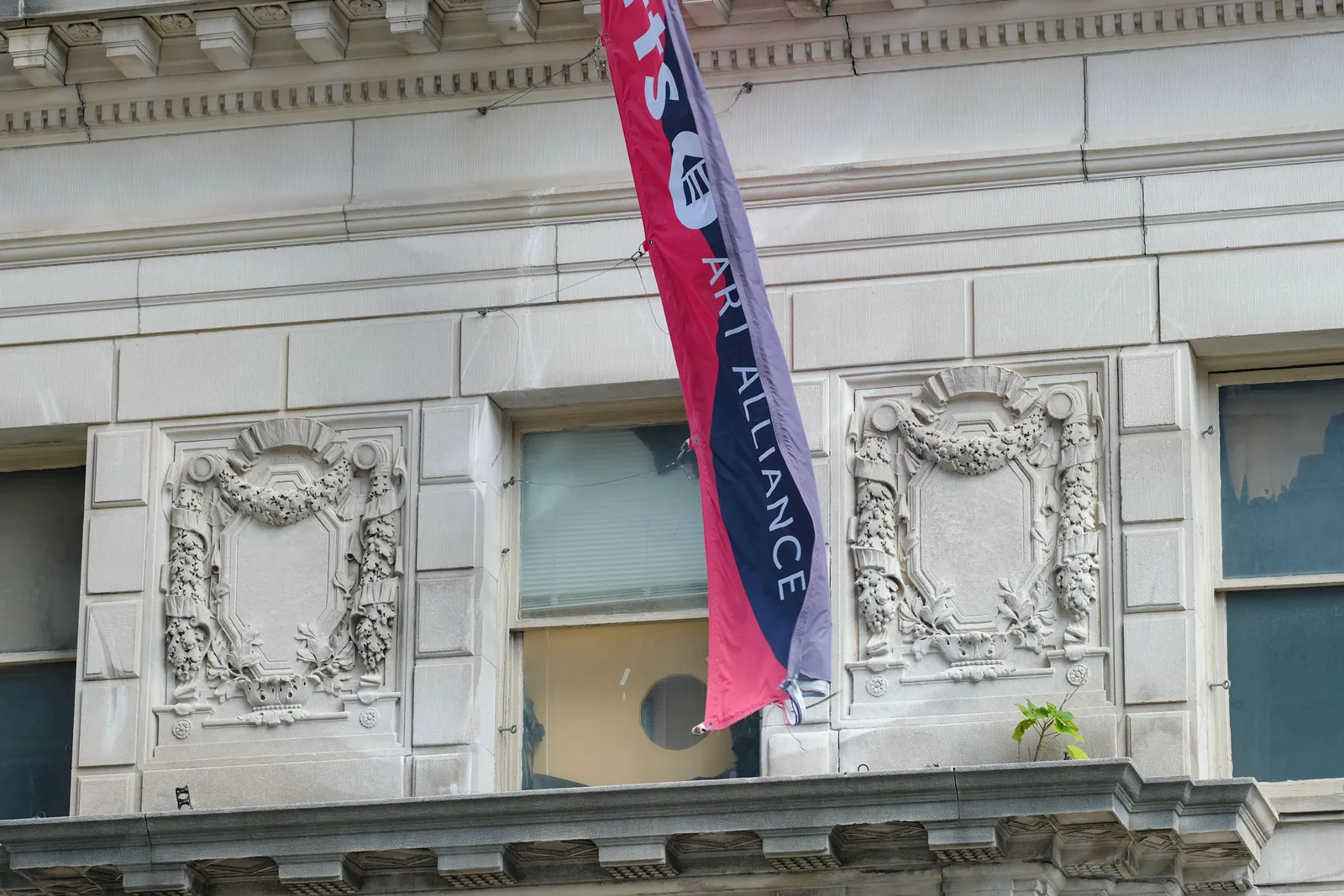
Teaching students what it means to be an artist
What made UArts unique is what will be ultimately lost with its closure.
Carol Moore, a former associate dean at UArts and founding director of its fine arts master’s in studio art, pointed to the faculty as one of the university’s chief strengths.
“There was a hands-on approach to trying to help the whole student,” she said. “Many creatives don’t always have that kind of academic approach that traditional liberal arts students might have. We were very much involved with the whole student in a holistic way.”
Philbert noted that the faculty were indeed a draw for many students. “The students had that romantic idea of what it meant to be an artist,” he said. “At the same time, they were extremely clear on the difficulty they were going to face in trying to make a living as an artist.”
And yet, at UArts they were surrounded by working artists who taught them, and peers who made art — all living in a city where housing costs are a fraction of those in New York City, that other art hub to the north.
Attending UArts was “life changing” for Eric Braddock, a senior artist with Notorious Studios who graduated from the university in 2008. Braddock, who grew up in southern New Jersey, knew from an early age he wanted to be an artist but hadn’t worked out a path for himself. After attending community college, a friend suggested he look at UArts.
“I was just immediately surrounded by a lot of amazingly talented young artists, and my classmates were all equally as passionate,” Braddock said. “I just felt really like I was where I needed to be, and that, combined with living in Philly, was a really cool experience.”
For UArts alumni, what does the loss of their alma mater mean? The answer is often not altogether tangible.
The closure certainly had an emotional impact for many. “You feel like you’re set adrift. Watching it on the news was disturbing,” said Jared Blando, a freelance illustrator and UArts alum, who followed the unfolding events from across the country in Portland, Oregon.
As a graduate and now as a working artist, Blando said that faculty make the difference in an arts school’s usefulness. Are faculty teaching students marketable skills and subject matter? Are they helping them learn how to actually build a functioning career in the arts?
“It's just about preparing students for the reality of a career in art and having the proper people teaching and preparing you for the reality of, like, you're going to be eating beans out of a can,” he said.
The university, as others, also helped create a lasting community. Braddock made lifelong connections at the university both with fellow students and with instructors who’ve asked him to return occasionally to talk to new cohorts. He also pointed to the value of the classroom experience — the faculty, peers, things that can’t be replicated in other settings.
“It just kind of invigorated me,” he said. “I learned so much.”
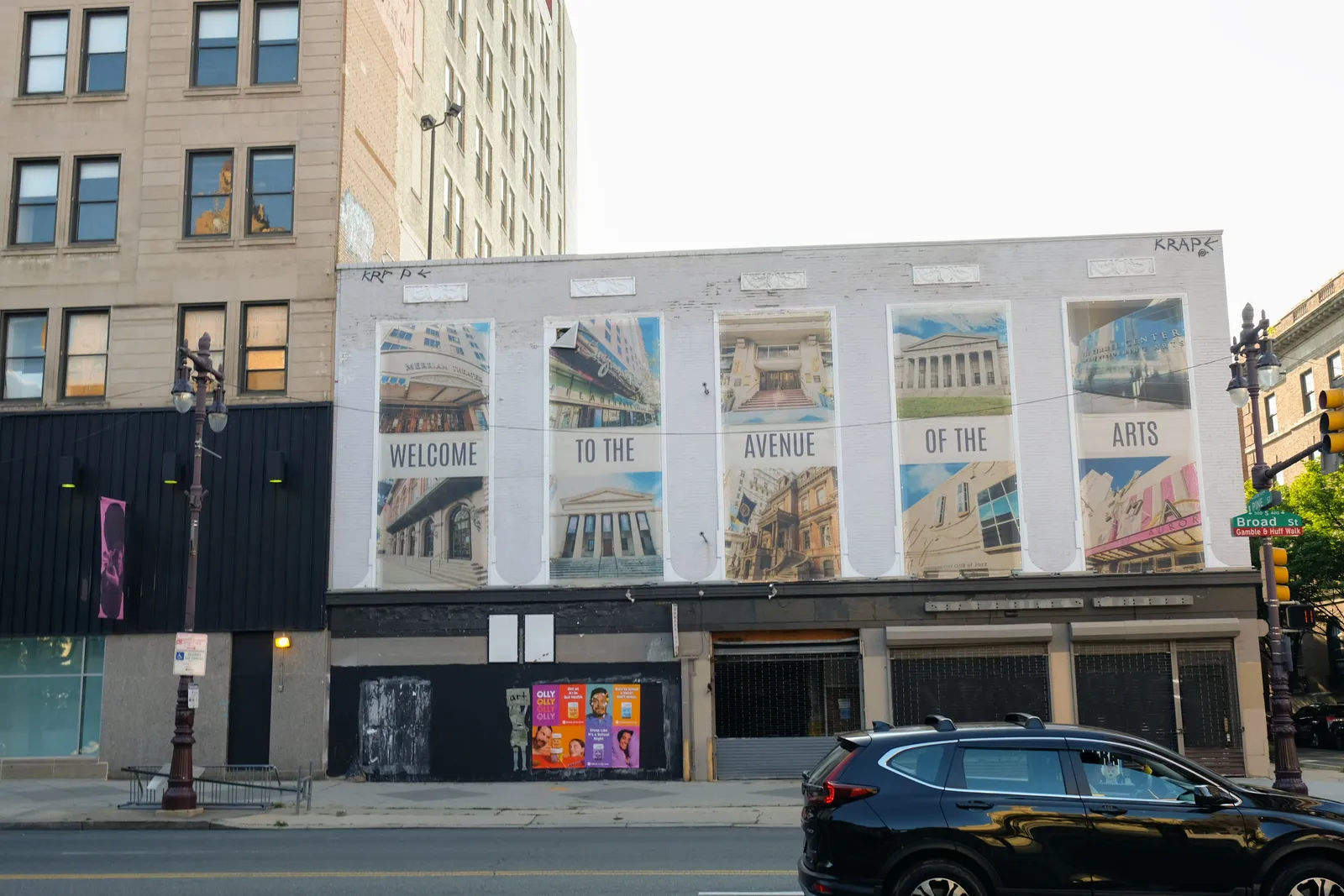
UArts’ other legacy — real estate
Along with its cultural and educational legacies, UArts leaves behind something of monetary value as well: namely, real estate.
The sale and future of that property could prove as fraught as other aspects of the university’s closure. When the university filed for Chapter 7 bankruptcy in mid-September, it reported $93.3 million in assets, most of that in property.
It also listed creditor claims amounting to $69 million that are secured by UArts’ property. In that camp would be bondholders on some $46 million in outstanding bonds. The trustee for those bonds, UMB Bank, issued a notice of default and demand for full payment to UArts two weeks after it closed, and bondholders are still waiting.
UArts also owes millions to unsecured creditors, including laid-off employees with potential federal labor law claims against UArts and unpaid vendors.
In the faculty union's view, former employees should be first in line for repayment.
“We will fight to make UAP members whole using every legal avenue available — the priority should not be bondholders or real estate developers, but the flesh-and-blood communities whose lives were upended by this disaster,” the union said in a statement following UArts’ Chapter 7 filing.
Selling its buildings is essentially the institution’s only path to paying back its creditors. So who will buy them?
Temple leaders hinted in late August at continued interest in UArts’ property, saying the university would still “explore opportunities with other non-profit organizations that might allow us to revitalize and activate UArts’ facilities.”
The ultimate fate of UArts’ buildings could have an impact on the city one way or another. Along with being valuable, they also played a major role in Philadelphia’s downtown arts scene, hosting exhibits, performances and festivals.
Pieczkolon argued that, for Philadelphia’s sake, the buildings should remain somehow in service to the arts.
“I don’t think anyone wants to see an Urban Outfitters where Terra Hall used to be,” he said.
Visuals Editor Shaun Lucas contributed to this story.


